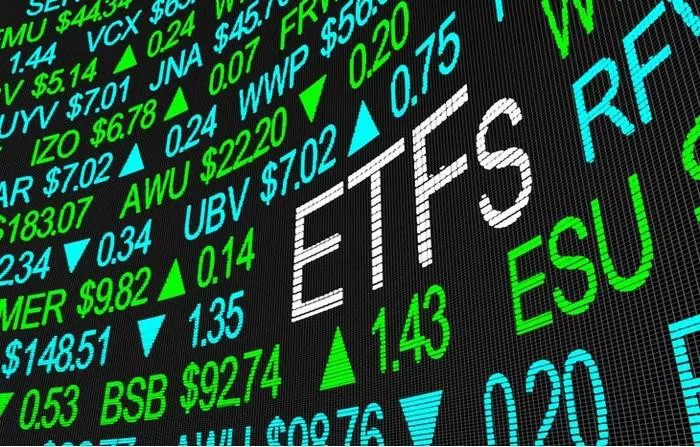Exchange-Traded Funds (ETFs) have become a cornerstone of modern investment portfolios, offering a convenient and diversified approach to market exposure. ETFs pool assets from multiple investors to purchase a diversified portfolio of stocks, bonds, or other securities, which are then traded on major exchanges. The core benefits of ETFs for investors include liquidity, diversification, and typically lower costs compared to mutual funds.
Futures contracts, on the other hand, are agreements to buy or sell an asset at a future date for a predetermined price. They play a crucial role in financial markets, offering opportunities for hedging and speculation. Futures ETFs combine these two concepts, providing investors with a way to gain exposure to futures markets without having to engage in the complexities of trading futures directly.
See also: Making Informed Investment Choices
I. Demystifying Futures Contracts
A Futures contract is a standardized legal agreement to buy or sell a specific commodity or financial instrument at a predetermined price at a specified time in the future. These contracts are traded on futures exchanges, such as the Chicago Mercantile Exchange (CME), and cover a wide range of assets including commodities, currencies, and financial instruments.
The key difference between owning an underlying asset and holding a Futures contract is the nature of the obligation. With a Futures contract, the investor does not own the underlying asset outright. Instead, they have the obligation to buy or sell the asset at the contract’s expiration. This distinction is crucial as it separates Futures trading from traditional asset ownership, involving different risk and reward profiles.
Futures contracts are widely used for hedging and speculation. Hedging involves using Futures to mitigate risk, such as a farmer locking in prices for their crops to avoid price fluctuations. Speculators, on the other hand, seek to profit from price movements in the underlying asset without any intention of actual physical delivery. They bet on price directions, which can lead to substantial gains or losses.
II. How Futures ETFs Track an Index
Futures ETFs are structured to track the performance of a specific Futures index by holding a basket of Futures contracts. These indices can cover a variety of sectors including commodities like oil or gold, financial instruments like Treasury bonds, or even volatility indices like the VIX.
There are two main types of Futures indices tracked by these ETFs: Excess Return and Total Return. An Excess Return index measures the returns of the underlying Futures contracts without considering any interest income earned on collateral. In contrast, a Total Return index includes both the price changes of the Futures contracts and the interest earned on the collateral, providing a more comprehensive performance measure.
A crucial concept in the operation of Futures ETFs is “rolling” Futures contracts. Futures contracts have expiration dates, after which they are settled. To maintain continuous exposure to the underlying asset, Futures ETFs must replace (or roll) expiring contracts with new ones. This process is known as rolling, and it can impact the fund’s performance depending on market conditions.
III. Key Considerations for Futures ETFs
One of the primary considerations when investing in Futures ETFs is the concept of “roll cost” or “roll premium.” This cost arises during the rolling process when the price of the new Futures contract is higher than the expiring one. Conversely, if the new contract is cheaper, investors benefit from a roll yield. Roll costs can significantly impact the tracking performance of a Futures ETF, especially in volatile markets.
Futures markets often experience conditions known as contango and backwardation. Contango occurs when the Futures price is higher than the expected future spot price, leading to a roll cost. In backwardation, the Futures price is lower than the expected future spot price, resulting in a roll yield. The state of the Futures market can therefore influence the performance of Futures ETFs, either enhancing or detracting from returns.
Futures ETFs offer several advantages over directly holding the underlying asset. For instance, investors seeking exposure to commodities like oil or gold can avoid the logistical complexities and costs associated with physical storage. Additionally, Futures ETFs can provide leverage, allowing investors to gain a larger exposure than their initial capital would permit. However, this leverage also introduces higher risk, as losses can be magnified.
See also: Mutual Funds vs. ETFs: Which One Should I Invest in ?
IV. Conclusion
In summary, Futures ETFs offer a way for investors to gain exposure to Futures markets without directly trading Futures contracts. They combine the diversification and ease of trading ETFs with the risk and reward dynamics of Futures contracts. Investors need to understand key concepts such as roll cost, contango, and backwardation, as these factors can significantly impact the performance of Futures ETFs.
Potential risks associated with Futures ETFs include leverage, which can amplify losses, and the complexities of the rolling process. Despite these risks, Futures ETFs can be a suitable investment for those looking to diversify their portfolios, hedge against market movements, or gain exposure to specific asset classes without the need for direct involvement in the Futures markets.


